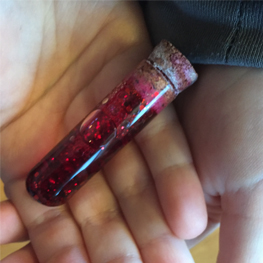
“Children are resilient. They’ll be fine.” Have you heard that response before? But when your child comes home from school crying and saying they hate school, it’s time to check in with them to see what’s really going on.
It may not be as simple as just asking them, “How was your day? What did you do in school?” As a parent, it’s your job to also understand your child’s mood. If your child has anxiety about school and doesn’t want to go to school, there’s a reason. The conversation needs to begin with you talking to your child.
Questions a parent needs to ask their child when they’re having anxiety about school
Marina Agafonov, Registered Provisional Psychologist with Serenity Now Wellness, says, “Ask your child: ‘What makes you happy? What makes you sad? How can I help you feel better? What can I do to help your tummy ache go away?’” By acknowledging and validating your child’s feelings, it helps your child realize you understand them. Agafonov says children experience anxiety just as much as adults do; however, a child’s vocabulary around ‘anxiety’ is not as well-versed. Give your child ‘feeling words’ so they can explore, with your guidance, what the appropriate feeling word is for their state or level of anxiety.
It might be more than just school that is bothering your child. Agafonov suggests one of the most common anxieties in childhood is separation anxiety. When a child is separated from their caregivers, it’s completely normal for that child to experience a low level of anxiety.
Mona Cooley, of Cool Family Solutions, says parents can help a child with anxiety by being aware of their anxiety. “Even if they do not respond to your questions, you are showing that you care about what is going on with them,” she says. When approaching your child, remain calm, suggests Cooley. If your body language and/or voice indicate that you are anxious, this unease reflects onto your child, which may cause them to pull back. “When talking with your child, it’s normal that they may not want to talk about it right now. Rather than continue to probe for answers, indicate to your child that when they are ready to talk, you are there to listen, advises Cooley. “When you actively listen to your child, you will see they are inadvertently telling you how to help them. Listen to their words, and use their words when problem-solving together.”
Easing your child’s anxiety
There are several ways to calm anxiety in kids:
DIY craft: calming glitter jar
My six-year-old had been experiencing anxiety about school. Through conversations with his teacher, vice principal and the school counselor, we are now on our way to calming his concerns. But it didn’t come easy. He was experiencing issues with ‘bulldozer’ kids in his class, loud speaking adults, difficulty printing and changes in our home. Thanks to some great guidance from friends and family, we asked the right questions. Plus, we have created his own toolbox for finding his calm. The school counselor has taught him how to calm his breathing when he’s upset in a way he understands: “When you are smelling the flowers, you take a deep breath in and then blow out the candles on the birthday cake,” my son says. When he slows his breathing down, he feels better.
We also created a calming glitter jar and a calming glitter key chain that he keeps in his backpack to use whenever he feels anxiety about something.
Want to create your own calming glitter jar?
Here’s what you’ll need:
Christina is a recognized broadcaster and storyteller, and mom to two young boys. For more information, visit christinarowsell.com.
Calgary’s Child Magazine © 2024 Calgary’s Child